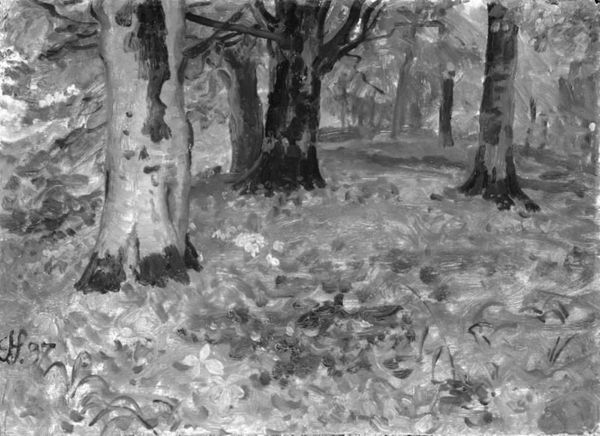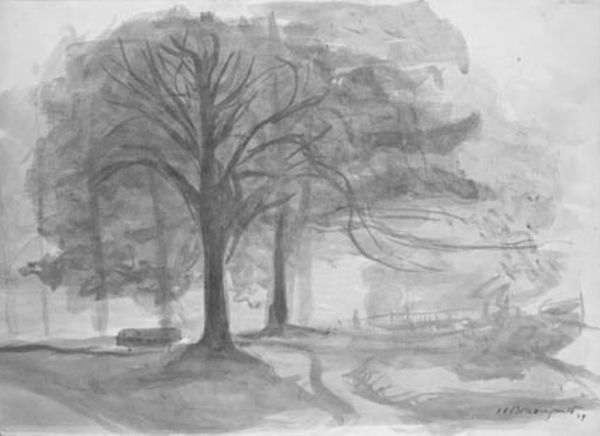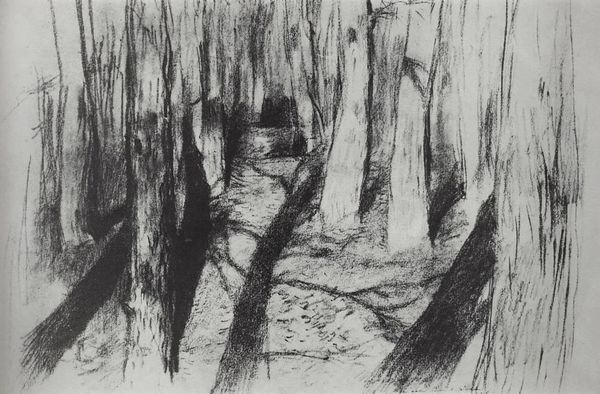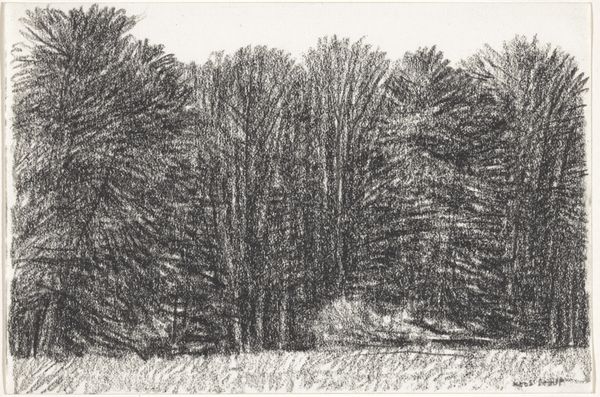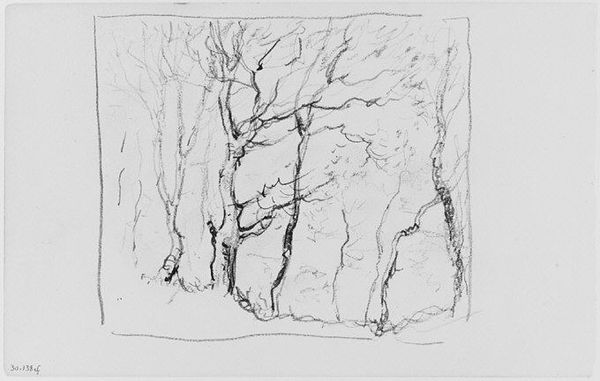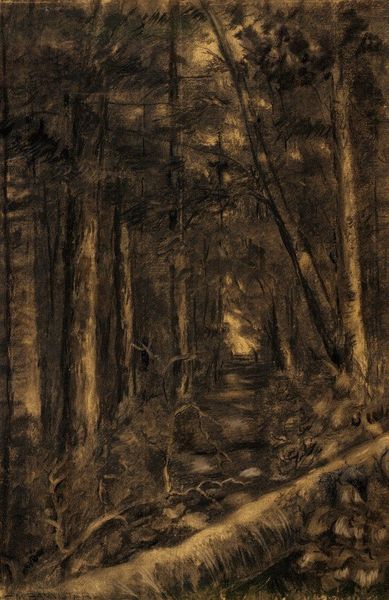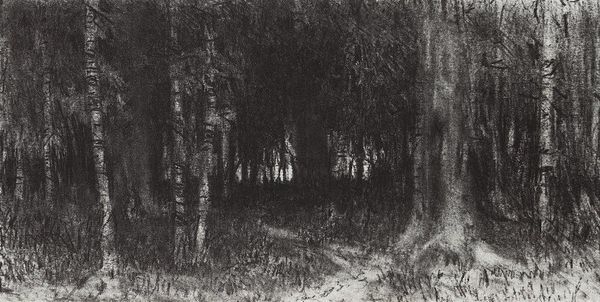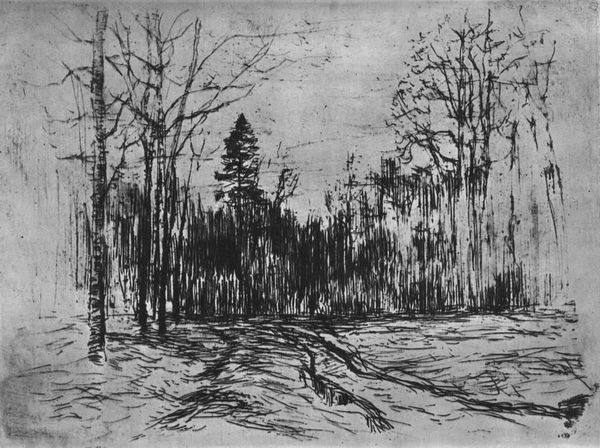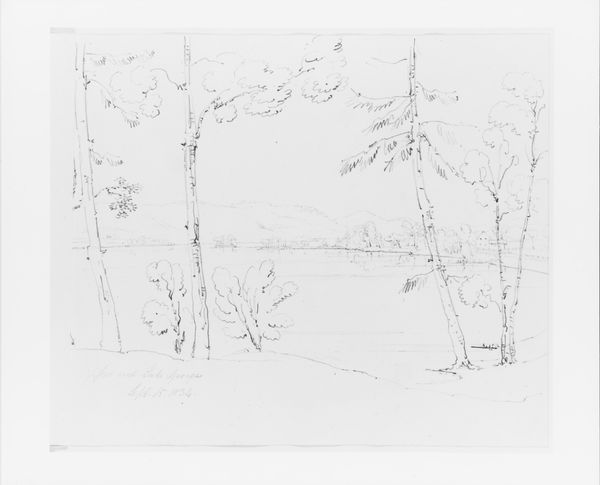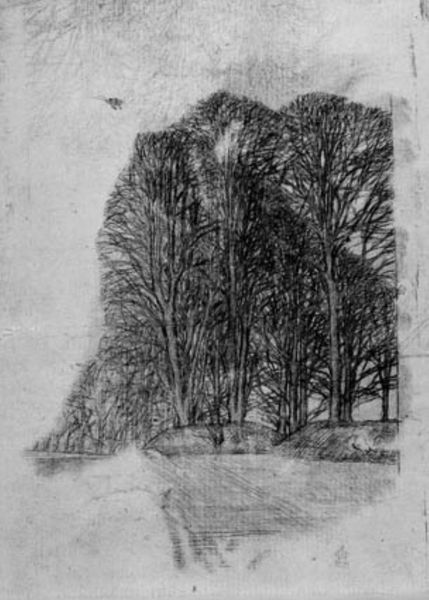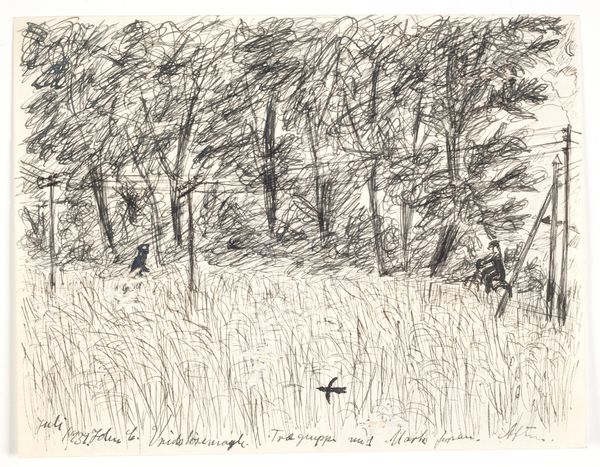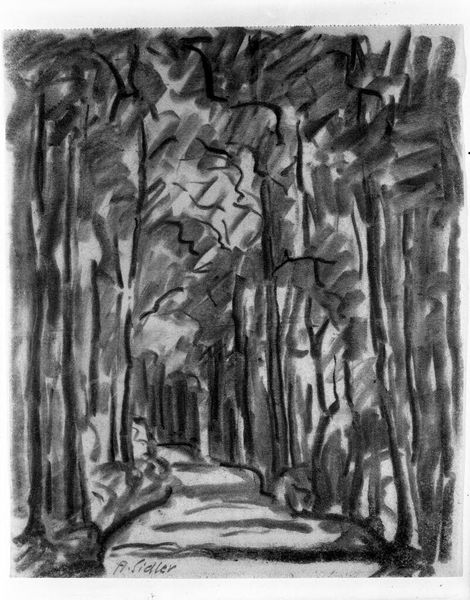
Dimensions: 308 mm (height) x 386 mm (width) (bladmaal)
Curator: Before us we have Othon Friesz's 1912 pencil drawing "De to veje. Belgien.", translating to "The Two Roads. Belgium." It's currently held here at the SMK, Statens Museum for Kunst. Editor: Oh, it feels so stark and spectral. A real whisper of a forest in the dead of winter, right? Like a charcoal soul searching for sunlight, with those almost hauntingly thin, bare trees. Curator: Friesz was associated with the Fauvist movement, known for its bold use of color. Yet here, he explores the landscape through monochrome, revealing a different facet of his artistic expression. His formal academic training really stands out through this pencil medium, as if he's recalling Ingres but filtered through an Impressionistic lens. Editor: You know, those two paths splitting off – it makes me think about choices, doesn't it? Every decision diverging like a root, some shadowed, some maybe leading to unexpected light. It is sort of existentially heavy for just a pencil sketch of a forest, I realize. Curator: The context of 1912 is also quite interesting. Tensions were escalating across Europe, not least in the wake of the Second Moroccan Crisis, but Friesz would probably have also been working toward his submissions for the Salon des Indépendants which opened the next year. Did his state-sponsored commissions offer him a space away from those broader societal anxieties, to concentrate on nature? Or perhaps those tensions still unconsciously found a way to come through the surface? Editor: Yes, like even just how heavily worked some areas are—the undergrowth right up front practically bursting with frenetic little scribbles! I’m starting to read anxiety even into those rapid marks, like the pencil itself is having a hard time deciding where to go! Curator: His choice of subject reflects a broader trend within early modernism to depict the landscape as a site for emotional and symbolic projection, turning away from traditional academic conventions. Editor: Friesz invites us into this crossroads—do we dare venture further? It's the type of invitation I both fear and find so stimulating. Curator: Absolutely. "De to veje" offers an almost contemplative pause, reflecting a crucial juncture in history—artistic and otherwise—and inviting reflection on the diverging paths of life itself. Editor: Agreed. There’s a genuine rawness here, and to experience something that bare can really pull at your insides. A reminder to breathe, even when surrounded by leafless branches.
Comments
No comments
Be the first to comment and join the conversation on the ultimate creative platform.
